Jacksonville, Fl. — The “Buresh Bottom Line”: Always be prepared!.....First Alert Hurricane Preparation Guide... City of Jacksonville Preparedness Guide... Georgia Hurricane Guide.
STAY INFORMED: Get the * FREE * First Alert Weather app
FREE NEWS UPDATES, ALERTS: Action News Jax app for Apple | For Android
WATCH “Preparing for the Storm”
WATCH “The Ins & Outs of Hurricane Season”
READ the First Alert Hurricane Center “Preparation Guide”
***** ALWAYS CHECK & RE-CHECK THE LATEST FORECAST & UPDATES! **** Heavy rain & flooding threat along with a few tornadoes & waterspouts... gusty winds, rough seas & surf, high rip current risk through at least Tuesday.
The “Buresh Bottom Line”:
* Debby hit the Florida Big Bend with a landfall about 7am. NHC: “Air Force Reserve Hurricane Hunter aircraft observations and Doppler radar images from Tallahassee indicate that the center of Hurricane Debby has made landfall around 700 AM EDT (1100 UTC) near Steinhatchee, Florida. Data from the Hurricane Hunters indicate that the minimum pressure at landfall was around 979 mb (28.91 in) and the maximum winds were estimated to be around 80 mph (130 km/h).” Note: this is a little south & east from forecasts so the transit across the far Southeast U.S. looks to be a bit more south & east but the long term average has seen plenty of wobbling with a mean northeast track.
* Northeast Florida/Southeast Georgia concerns are centered around heavy rain - possibly very heavy, rough seas & surf, a high rip current risk & a few tornadoes/waterspouts. Winds peaked Monday as high as 50-70 mph in gusts with a few isolated tornado reports.
* We’re now at the “fork in the road” for longer range movement, especially the forward speed but also a turn back toward the coast midweek.
* Squalls of heavy rain & storms will impact Eastern Ga. & the Carolina’s with extremely heavy rain from Savannah to Charleston.
* Realize impacts from Debby will occur many miles from the center & OUTSIDE of the forecast cone.
* Forecasts remain in flux & subject to change... even after landfall.
Specifics primarily for NE Fl./SE Ga. given *current* forecast track:
Rainfall: The more north & west over N. Fl & SE Ga., the greater the rain amounts. More than a foot has been measured for some areas near & north of I-10 northward into SE Ga. Locally heavy rain will still occur Tue. as multiple bands rotate southeast across the area but amounts won’t as high as the last 1-2 days.
Wind: sustained winds will average will subside to 10-20 mph through Tuesday with gusts 30-40 mph. While not particularly strong, the saturated soil will allow for some trees to be more susceptible to being uprooted.
Ocean: Seas will slowly subside to 4-8 feet feet off the Ga. & Fl. coast. Surf will average 3-6 feet. Winds will become offshore - out of the west - cleaning up the surf.
Rip Currents: A high to very high rip current risk at area beaches. The best advice is to stay out of the ocean.
Storm Surge: Little. The majority of the flooding will be due to rainfall. But some surge will occur along coastal Ga. - possibly as much as 1-4 feet. Some flooding at times of high tide will continue for the intracoastal & along the St. Johns River & its tributaries.
The Atlantic Basin Overview:
A Storm Surge WARNING: Georgia and South Carolina coast from the Mouth of the St. Mary’s River to South Santee River South Carolina.
A Storm Surge WATCH: South Carolina and North Carolina coast from north of South Santee River to Cape Fear, North Carolina.
A Tropical Storm WARNING: Ponte Vedra Beach, Florida to Little River Inlet, South Carolina.
A Tropical Storm WATCH: North of Little River Inlet to Cape Fear, North Carolina.
(1) “Debby” - The 4th Atlantic named storm of the season continues to moved steadily northward now over the Eastern Gulf strengthening into the 2nd hurricane of the season with the 11pm Sunday, 08/04 advisory. Debby was intensifying right up to landfall but thankfully ran out of time over the warm Gulf water with a 7am EDT landfall at Steinhatchee some 60-70 miles north/northwest of Cedar Key. Debby spent Monday moving east/northeast across far North Florida & South Georgia “smelling” the warm water of the Western Atlantic by midnight.
Well - let’s give a tip of the hat to the GFS model - at least so far as - like with “Beryl” in late June/early July - the GFS has generally done pretty well - consistently taking Debby over the Gulf though admittedly the model bounced around quite a bit. The European model was good at picking up on development potential but was initially way too far east. Debby’s large, broad & spiraling circulation tightened & constricted some during the strengthening phase but will spread out again after landfall. Mid & upper level shear increased some upon approach to land but was in the same direction as Debby’s forward movement making the shear less detrimental to the tropical cyclone.
Debby is slowing while moving over land & there are indications of a very slow moving tropical cyclone as steering currents collapse. The result could be a storm capable of dumping 1-2+ FEET of rain along & east of the track with the highest severe flooding threat setting up along I-75 & I-10 in North Florida, much of Central & Southeast Ga... as well as the Carolina’s. 30″+ rainfall amounts are in play along an axis from landfall in the Big Bend through parts of the southeast third to one-half of Georgia through the eastern half of the Carolina’s... & possibly very near & either side of the Florida/Ga. border.
The track has come down to - as expected - an alleyway between sprawling upper level high pressure cells - the Bermuda high & a summer-long second cell over the Southern/SW U.S. & an upper level trough digging southeast over the Eastern U.S. This interaction with the upper level trough will add some upper level “ventilation” for Debbie adding to the potential for a slower decay once over land. This interaction will also be key to whether or not Debby continues moving or gets left behind. The “end game” is particularly perplexing - as to whether or not Debbie stays over land - Georgia &/or the Carolina’s or manages to get over the Western Atlantic before moving either north or west again as upper level high pressure re-strengthens over the N. Atlantic & the trough lifts out & fills from the Eastern U.S. The European is the most east model & eventually takes Debby up the coast by mid to late week with a second landfall...the Canadian model is essentially the same as the European model now... while the GFS is much slower & has been showing a trend of Debby briefly making it to the Atlantic east/northeast of Jacksonville but then a turn back west(!). While “up & out” is somewhat favored right now, a sharper turn back to the west has to be considered. The return to the warm ocean is also a concern for re-intensification before a potential second landfall. Ultimately - the 2nd landfall will be dictated by a rebuilding of the upper level ridge of high pressure to the north of Debby mid to late week as the upper level trough vacates after failing to fully pick up the tropical cyclone.
It is important to realize & understand that while forecast models are in decent agreement in the short term, there is still plenty of room for possibly significant forecast changes &, therefore impacts. Heads-up for Florida & the entire east coast of the U.S.
In summary: Debby will move painfully slowly to the east/northeast through Tuesday... all bets off on where the turn west/north or northwest followed by a potential 2nd landfall.
Keep in mind impacts - flooding, strong winds & tornadoes - from Debby will extend well away from the center...



Jacksonville N.W.S.:
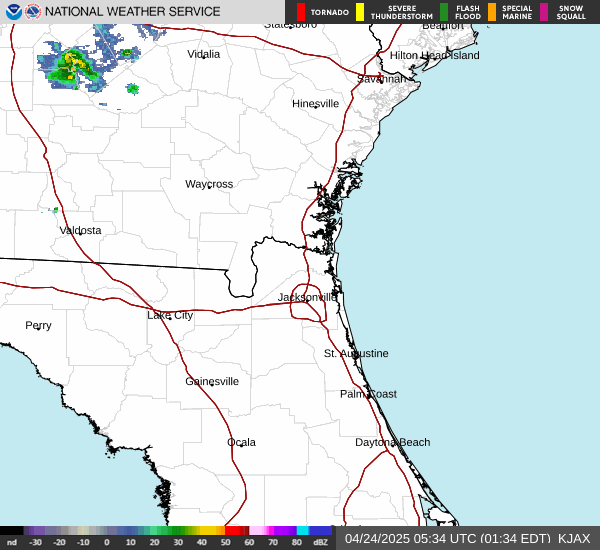
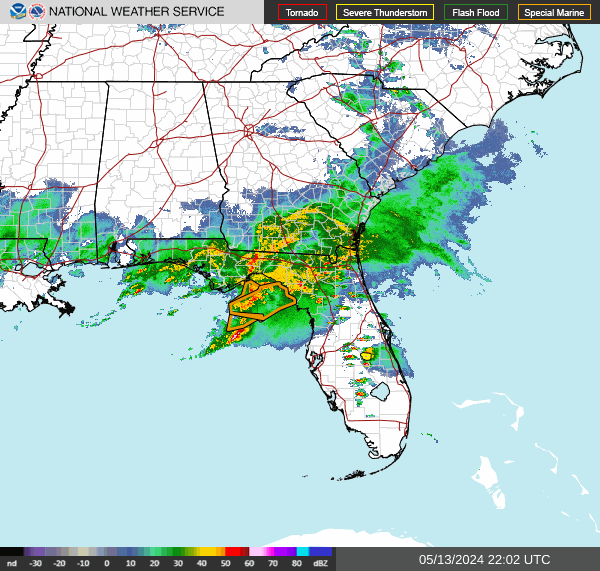
Radar imagery from S. Florida Water Management District:

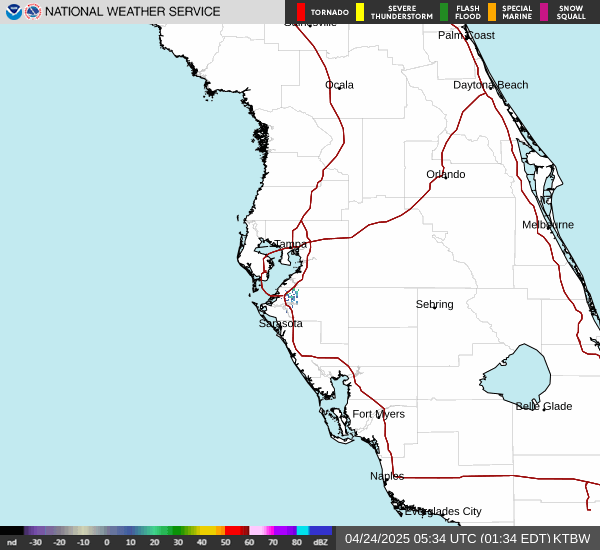
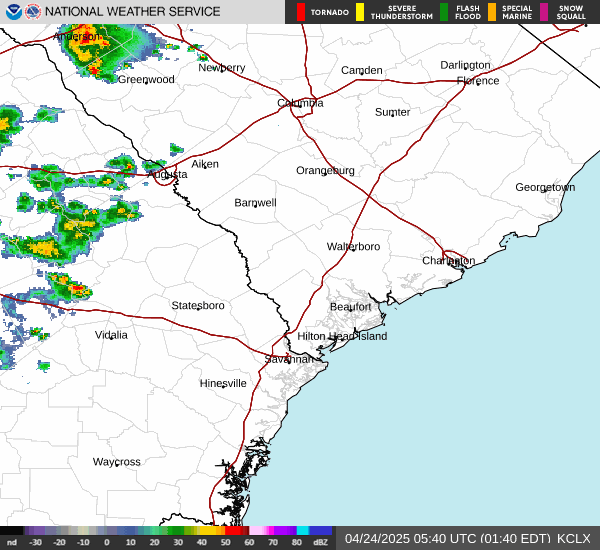



500mb - about 30,000 feet showing the dipping trough - jet stream - between the two strong high pressure cells. It’s becoming more clear that the trough will not fully pick up Debby & a new ridge taking over will cause Debby to either move back inland along the east coast or at least hug the coast for much of this week:



Composite map below shows water temps. (plenty warm - 85-90F+)... wind shear (decreasing markedly)... & dry air (not much):
Wind shear:
(2) A couple of active tropical waves are over the Central & Eastern Atlantic. Forecast models are not too excited about the waves for the most part, but it’s something to watch as the African “wave train” starts to ramp up & the MJO pulse spreads eastward. One wave in particular will quickly cross the Caribbean this week & has potential for long term development over the Western Caribbean &/or Western Gulf of Mexico.
The velocity potential anomalies map below shows a lot of sinking air (brown lines) - & a lack of convection - over the Atlantic Basin to the far East Pacific while rising air (green lines) is over the Central & West Pacific more convection is notable. Often the green areas (MJO pulse) will correlate with increased tropical activity. So it’s the W. Pacific that will be more active now but this pulse should move eastward - signs of which we’re already seeing - helping to set off a return to a more active Atlantic through at least the middle of August.
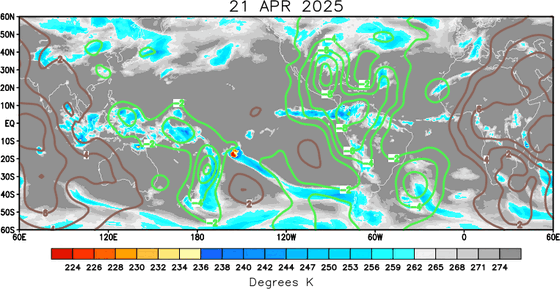
REMEMBER WHEN A TROPICAL STORM OR HURRICANE IS APPROACHING: Taping windows is *not* recommended & will not keep glass from breaking. Instead close curtains & blinds.
Realize the forecast cone (”cone of uncertainty”) is the average forecast error over a given time - out to 5 days - & *does not* indicate the width of the storm &/or where damage might occur.
The upper oceanic heat content (UOHC) [tropical cyclone heat potential/TCHP] across the SW Atlantic, Gulf & Caribbean is unseasonably high for this time of year:






Water vapor loop (dark blue/yellow is dry mid & upper level air):


August tropical cyclone origins (early season breeding grounds are the Gulf &/or Western Caribbean:
Averages below based on climatology for the Atlantic Basin for August (1 hurricane so far, 3 tropical storms):
Wind shear (red - strong shear; green - low shear):



Saharan dust spreads west each year from Africa driven by the prevailing winds (from east to west over the Atlantic). Dry air = yellow/orange/red/pink. Widespread dust is indicative of dry air that *can* interfere with the development of tropical cyclones. However, sometimes “wanna’ be” waves will just wait until they get to the other side of - or away from - the dust plume then try to develop if other conditions are favorable (we’ve already seen this with Beryl & Debby this year). In my personal opinion, there is way too much “hoopla” about the presence of Saharan dust & how it relates to tropical cyclones. In any case, the peak of Saharan dust typically is in June & July.

2024 names..... “Ernesto” is the next name on the Atlantic list (names are picked at random by the World Meteorological Organization... repeat every 6 years). Historic storms are retired [Florence & Michael in ’18 (the last time this year’s list was used)... Dorian in ’19 & Laura, Eta & Iota in ‘20, Ida in ‘21 & Fiona & Ian in ‘22]). In fact, this year’s list of names is rather infamous because of the ‘04 season when Charley, Frances, Jeanne & Ivan - all retired names - hit Florida within a matter of about 6 weeks. The WMO decided - beginning in 2021 - that the Greek alphabet will be no longer used & instead there will be a supplemental list of names if the first list is exhausted (has only happened three times - 2005, 2020 & 2021). The naming of tropical cyclones began on a consistent basis in 1953. More on the history of naming tropical cyclones * here *.





East Atlantic:





Mid & upper level wind shear (enemy of tropical cyclones) analysis (CIMMS). The red lines indicate strong shear:
Water vapor imagery (dark blue indicates dry air):

Deep oceanic heat content over the Gulf, Caribbean & deep tropical Atlantic. The colors will brighten greatly as the water warms to greater depths deeper into the season:

Sea surface temp. anomalies:


SE U.S. surface map:

Surface analysis centered on the tropical Atlantic:

Surface analysis of the Gulf:

Caribbean:

Atlantic Basin wave period forecast for 24, 48, 72 & 96 hours respectively:





East & Central Pacific:
“Carlotta” has formed over the Eastern Pacific & became the first hurricane of the season over the E. Pacific - one of the latest dates for such an occurrence on record. Nevertheless - no impact to land areas while moving west & dissipating.
“Daniel” has dissipated followed by “Emilia” followed now by “Fabio” which won’t last much longer.









West Pacific:

Global tropical activity:



Cox Media Group
:quality(70)/cloudfront-us-east-1.images.arcpublishing.com/cmg/JIFG55NSN5HKZK6LKEZ4C7UU5I.jpg)

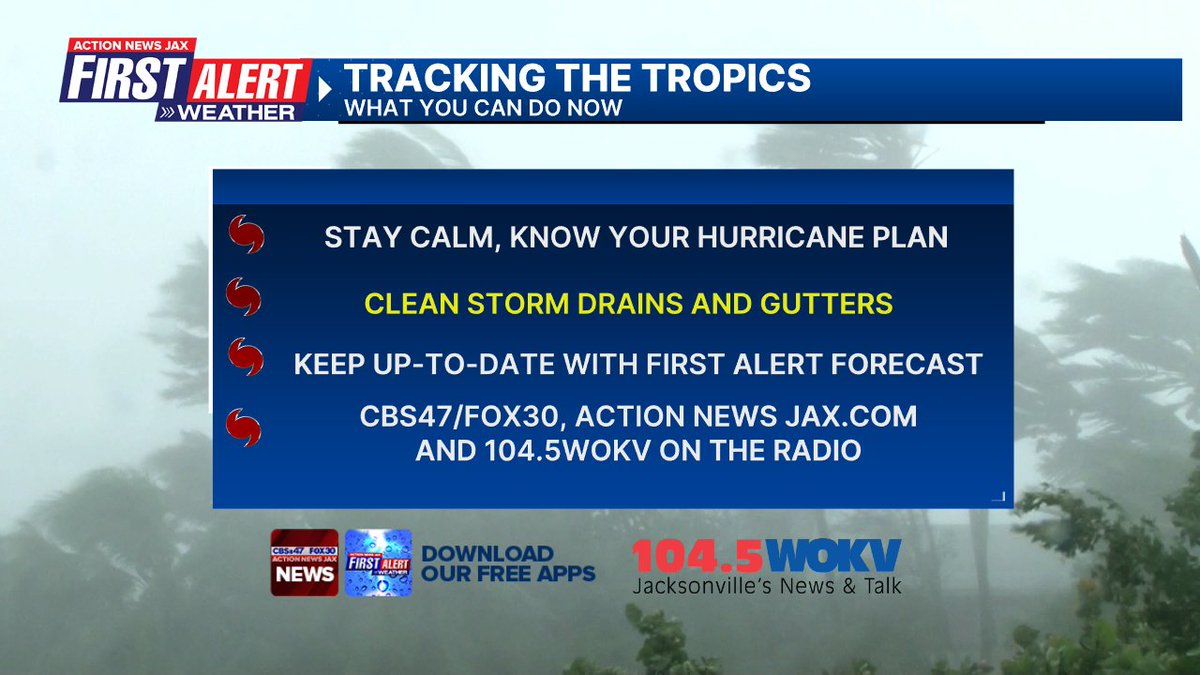



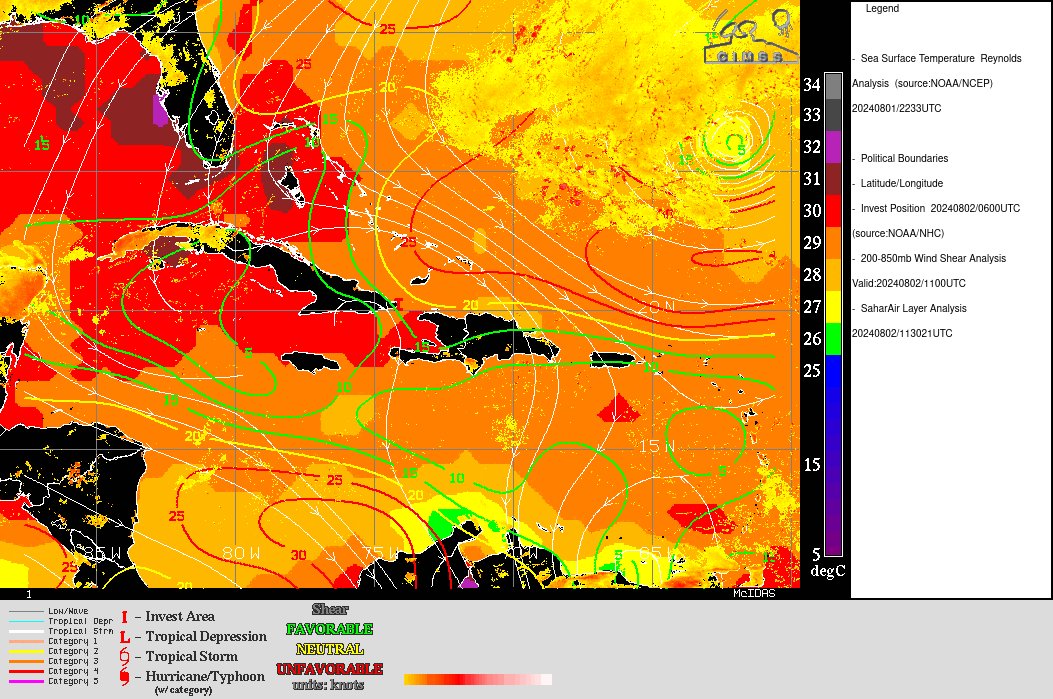

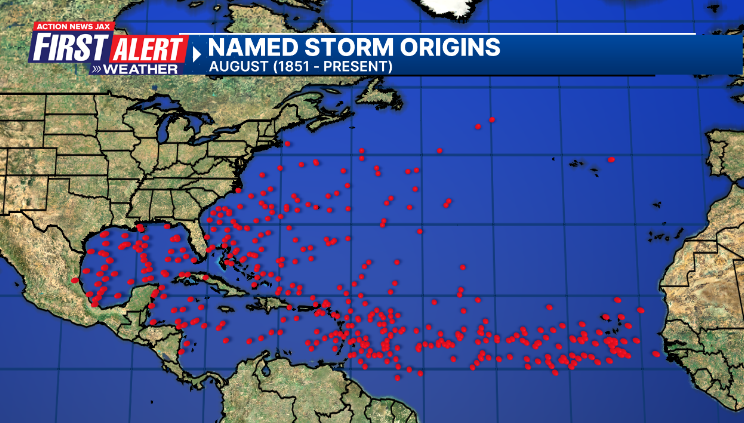

:quality(70)/cloudfront-us-east-1.images.arcpublishing.com/cmg/US6DVBWHIJGWLCXHGP7JGTXHSI.jpeg)
:quality(70)/cloudfront-us-east-1.images.arcpublishing.com/cmg/R6DBE7SGDVGHBKPL6K44ZQWEG4.jpg)
:quality(70)/cloudfront-us-east-1.images.arcpublishing.com/cmg/VCPPTGGWW5C6RAF3G6GT2FG2EQ.png)
:quality(70)/d1hfln2sfez66z.cloudfront.net/09-06-2024/t_85ae07bed05e4d9e9458631dc6f35024_name_file_960x540_1200_v3_1_.jpg)
:quality(70)/cloudfront-us-east-1.images.arcpublishing.com/cmg/ZJVSSSESDNAIBHKBYUMWHKKSOQ.jpg)